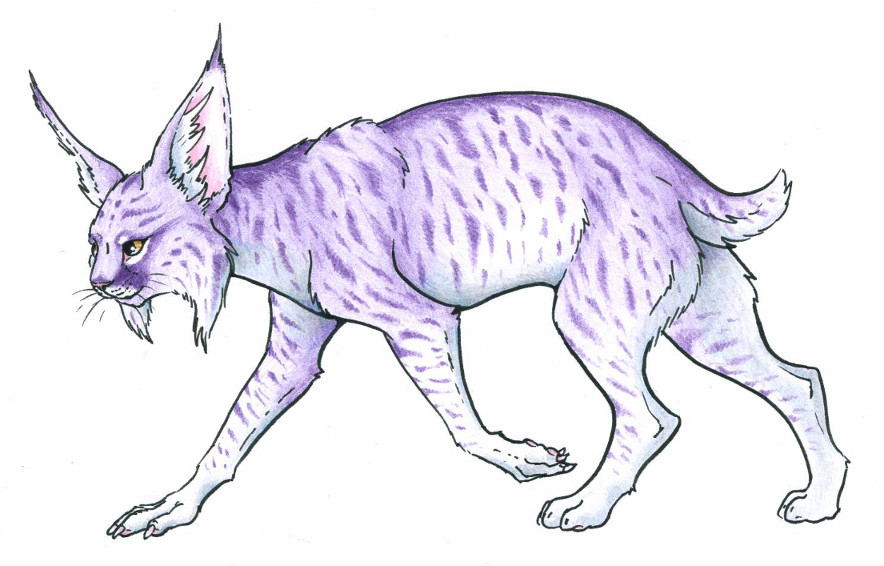
Desert kiarrcats have to endure some of Ryll's fiercest heat, and as such, every part of their body is built to maximise heat loss. Deserts are lean and rangy built creatures, with thin fur and huge ears. The ears - the biggest of any kiarrcat - contain a complex network of blood vessels, allowing them to radiate heat. This, of course, backfires in cold environments, and Deserts are very sensitive to cold. To cope with the desert nights, which can often drop to extremely low temperatures, Deserts allow their core body temperature to fall dramatically when they sleep (see Torpor, below, for more details). They are roused by the sun the next day, as it warms them up to normal. Deserts have a very efficient metabolism, and require half the food and water of other kiarrcats.
Most Desert clans are small by necessity, topping out at about twenty individuals. Most of these groups are nomadic, and have a broad range across Ryll's desert regions, often across well trodden routes. However, if a reliable source of water such as a river is available, Deserts will create permanent settlements. These are often mixed communities with significant populations of Water kiarrcats - an odd, but surprisingly common mixture. Like most dry-region kiarrcats, Deserts like to be outdoors, but they build more shelters than the Grasslands and Savannahs, perhaps due to their need to keep warm at night (the torpid state is very vulnerable). In rocky deserts, these dens are carved into the ground or cliff faces, whilst in sandy deserts, the kiarrcats prefer to use tents of animal skin and woven grasses.
- Average height at shoulder: 80cm
- Comfortable temperature range: 15 to 40C
Traits and Abilities
- Stamina: Deserts just keep on going! They can walk for days, and require less food and water than other creatures of a similar size.
- Heat Resistance: Desert kiarrcats regularly tolerate some of the highest temperatures on Ryll, and every part of them is built to maximise heat loss. Obviously, this also has the effect of making them very sensitive to cold.
- Torpor: Deserts have two modes of sleep. The first, entered during warm conditions such as during the day, is the normal type. The second is torpor, a low activity state entered in colder conditions, such as the desert night. Though not true hibernation, torpor has the effect of reducing the kiarrcat's heart and breathing rate, and drastically lowering its body temperature. Usually entering this state is voluntary, but in especially cold areas they may lapse uncontrollably. Either way, only warmer temperatures can rouse a torpid Desert.
